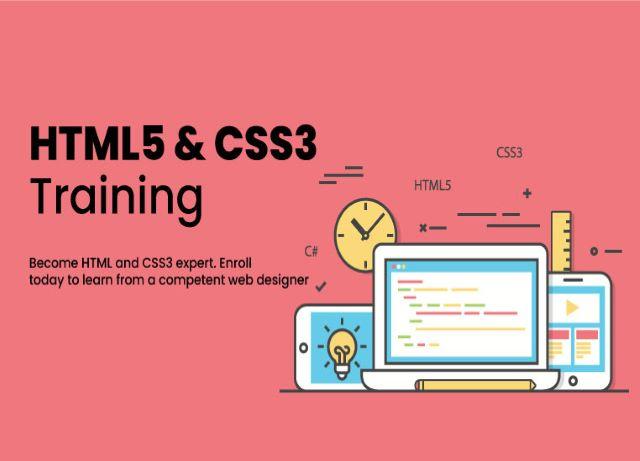Introduction
Using HTML and CSS together is essentially required in the initial stage of creating a website. In the same way, as HTML has upgraded to its newest version HTML5, CSS has also introduced a new version CSS3. Both website owners and developers have benefited from the new changes coming up in the market. This article will explore what HTML5 and CSS3 are and their benefits. Alternatively, you can enroll for the HTML5 and CSS3 Online Training, which will help you advance the concepts and make you stand out from your peers.
HTML5: Meaning
Hyper Text Markup Language is what HTML is. Moreover, HTML5 is a markup language used to organize and present material for the World Wide Web. It is an updated version of the original HTML specification, developed in 1990 to define the Open Web platform.
HTML5 came into the light to satisfy the expanding requirement of today’s media, cross-device, and mobile internet. Because many of its features receive modification for access on low-powered devices, like Tablets and Smartphones, we can state that it is an excellent tool for cross-platform mobile app development.
Moreover, HTML5 provides a single universal interface to make loading components easier.
CSS3: Meaning
CSS stands for Cascading Style Sheets. It is a style sheet language used to describe the presentation semantics of a markup-language-written page. It is a design language for web pages that allows designers to see how their website documents will appear in the final context.
However, all modern graphical browsers, independent of the operating system, support CSS. It distinguishes between the document’s content and appearance with the help of elements like typefaces and color. Moreover, you may use it to fine-tune the visual look of a web page for a particular screen size. CSS3 is the most recent CSS standard.
Benefits of HTML5 and CSS3
Several firms are building and extending online content and web apps utilizing HTML5 and CSS3 to generate well-defined and accurate web pages and systems that you can access on many devices, web browsers, and operating systems. As a result, the following are the benefits of HTML5 and CSS3:
● Cost Effective Multi-Platform Development
You may use a single line of code on numerous platforms and devices, which is advantageous since it minimizes development and maintenance expenses during the lifespan of the website or web app. The most recent best practice for cross-platform application development for Android and iOS is a “Hybrid,” in which web standards support within a native app “wrapper” that you can publish in the Android or iOS store.
● Offline browsing
You can use applications without requiring an internet connection. Similarly, HTML5 allows the offline application cache to save web application code and local content. That is one of the benefits for businesses such as publishers, who can provide their potential readers with an offline web experience. In reality, an offline cache produces excellent speed improvements.
● Expansion of video to a wide variety of platforms
HTML5 offers native video capabilities and can be directly developed into supported browsers, allowing faster and higher-quality video dissemination. In reality, involving direct video content on a web page can improve the website’s rating in search engine results. The reason is that videos instantly appeal to users, and excellent content always raises a site’s rating.
● SEO Ready
If a site’s structure is not correct, the page will not rank well in search engine results. Content marketing is useless if your website is not well-structured. In order to get a high ranking, a site’s structure should be easily legible by a search engine, with a logical content structure.
Nevertheless, HTML5’s new components may affect when websites are re-indexed on search engines.
● Good User Experience
HTML5 offers a bigger variety of design and presentation features across media kinds, with the goal of giving developers more freedom to create a perfect site and online apps. It is crucial from a commercial point of view since user interaction instantly increases a website’s productivity.
● Compatibility with a variety of browsers
All browsers do not have to support all online sites or web apps. However, the usage of HTML5 and CSS3 allows the designer to create a site or app that is interoperable with all browsers.
Conclusion
Hopefully, you may find this article informative. We have compiled the different features of HTML5 and CSS3. Both these languages offer enormous opportunities in the development sector. So, if you wish to have a career in this domain, we suggest you enroll in the HTML5 and CSS3 Course in Gurgaon.

As the editor of the blog, She curate insightful content that sparks curiosity and fosters learning. With a passion for storytelling and a keen eye for detail, she strive to bring diverse perspectives and engaging narratives to readers, ensuring every piece informs, inspires, and enriches.









